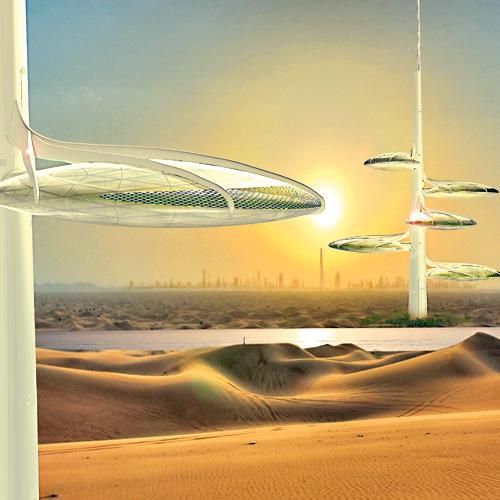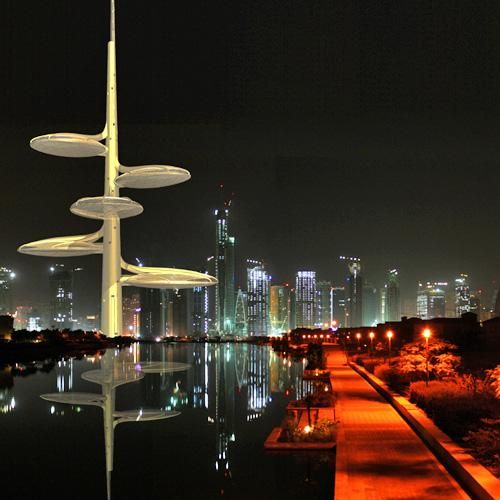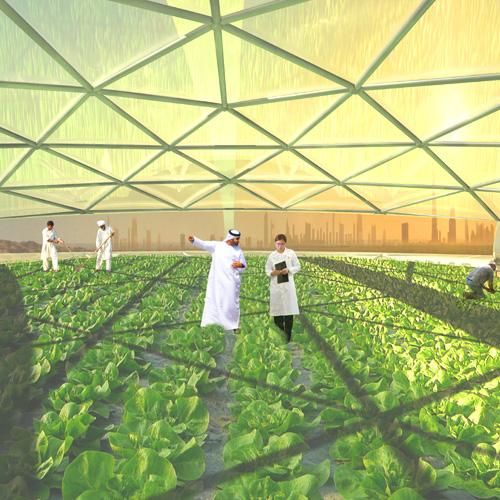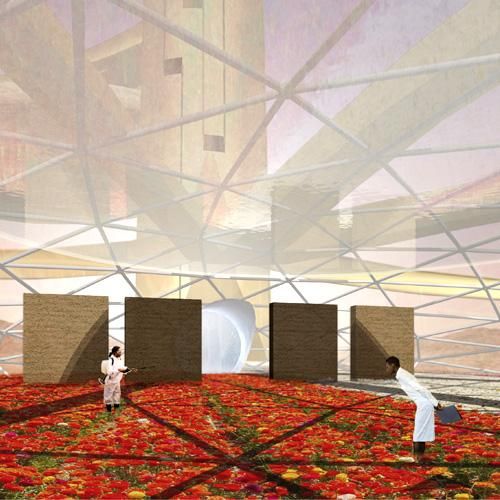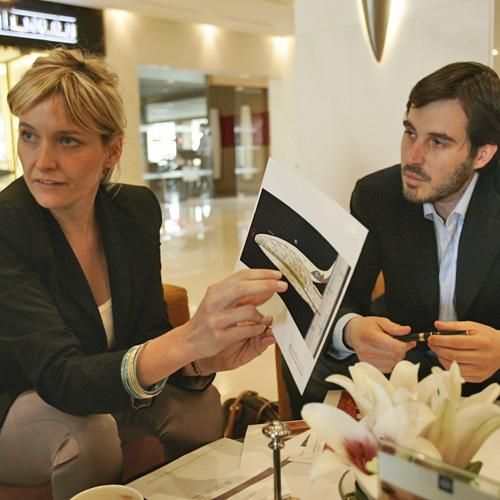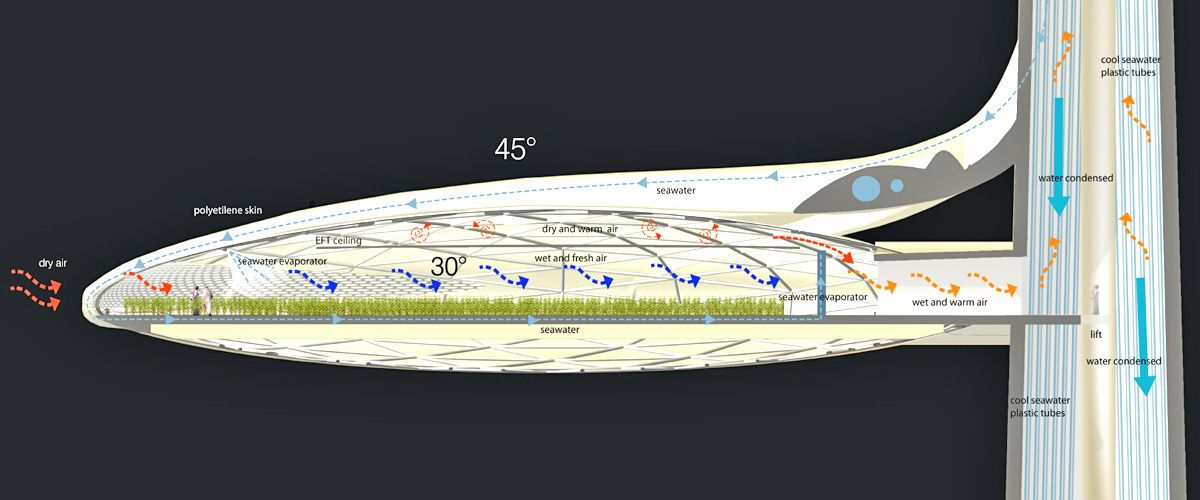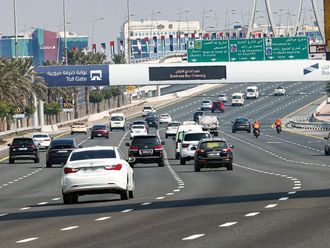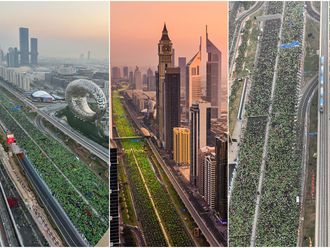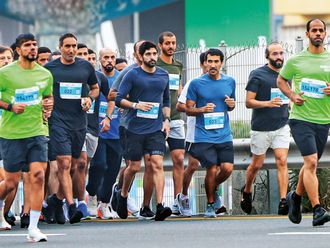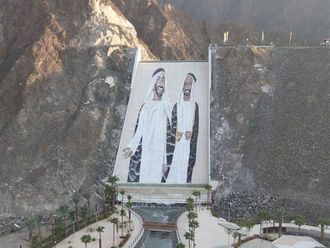Two Italian architects behind the world's first believed seawater vertical farm project are in Dubai meeting with companies interested in making their 300-metre-tall eco-project a reality, XPRESS has learnt.
The project is based on the principles of the ancient Arabian wind towers to capture humidity and irrigate crops grown high above the ground.
Studiomobile founding architects Antonio Girardi and Christiana Favretto are promoting their other-worldly design stacked with five elliptical-shaped, climate-controlled pods 70 metres long and 50 metres wide in which high humidity indoor conditions mixed with dry desert air help evaporate saline water into fresh water.
The vertical tower is designed to be constructed near the Gulf or sea creek shorelines to ensure a constant source of seawater.
The Venetian firm says the system uses “seawater to cool and humidify greenhouses and to convert sufficient humidity back into fresh water to irrigate the crops''.
The process may prove a serious alternative to siphoning millions of litres of precious freshwater from dwindling desert aquifers in an Arabian Peninsula struggling to keep pace with new development and growing farming demands. A different tree
In an exclusive interview, Girardi likened the studiomobile seawater vertical farm structures to ecologically friendly trees that are a symbol of nature.
“This is a sort of tree with water in the basement,'' he said in an interview. “It has branches in the shape of five cocoon greenhouses. When you have a rain forest tropical atmosphere (inside the pods), the plants do not need a lot of fresh water for irrigation.''
Water demands by crops are reduced “as they are not stressed by excessive transpiration''.
Virtually any agricultural crop can be grown inside the pods from tomatoes and lettuce to celery and strawberries, he said.
To reduce the carbon footprint of each seawater vertical farm, each of the pods is covered with a transparent polymer-type membrane that allows sunlight in, negating the need to install electrical growing lights overhead, he said. “We wanted a very green model,'' Girardi added.
To keep it simple but highly powerful, Favretto said the design essentially incorporated the ancient Arab wind tower design to avoid the need for electrical fans to move air around.
Warm air is naturally forced upward by what Favretto called the “stack effect'' inside the trunk of the vertical farm tower. When the warm air comes into contact with plastic tubes filled with cooler seawater, drops of fresh condensed water are formed and pooled to constantly replenish crops.
Chimney effect
“The chimney effect was something that was used in Arabian culture,'' Favretto said. “We have tried to reproduce this kind of experience in a new way. We studied a lot of Arab architecture. They had many incredible technologies to cool their houses. A lot of contemporary architecture has forgotten about it. Our design is a study of the past.'' To evaporate the water, the design uses “cardboard sheets'' that “crystallise calcium carbonate from the sea water and harden like sea shells''.
The farms weren't designed with only function in mind. They are also meant to visually capture the imagination of those who believe in eco cities of the future, Girardi said.
“This is also a landmark for the city. Burj Dubai is a symbol of innovation. Our seawater vertical farm would be a landmark of development. It's a new way to see Dubai,'' he said.
Five reasons going for the project
Girardi and Favretto, residents of Venice, Italy, say they have worked for two years in the UAE on infrastructure and housing projects, while doing research on the new project.
The top five issues they stayed focused on whilst creating their unique seawater vertical farm design were:
- Lack of fresh water: Gap in demand and supply of water is an issue. Agriculture accounts for 70 per cent of water used and is a major pressure point
- Desalinisation: Abu Dhabi has five large desalination plants that consume huge energy, which requires large amounts of fuel, which also mean release of large amounts of gas into the atmosphere
- Space constraints: According to the UN, the world population is expected to increase from 6.7 billion in 2007 to 9.2 billion in 2050. In the same period the population living in urban areas is projected to rise from 3.3 billion to 6.4 billion. This means less space to produce more for a growing populace
- Food transport: According to the Food and Agriculture Organisation (FAO), the food and agricultural sector is responsible for more than one third of global greenhouse gas emissions, where transport is responsible for 2.5 per cent of the food chain's emissions and food refrigeration accounts for 18 per cent
- The settlements: Extensive use of space can damage the natural environment of the country and, especially in some countries, settlements in un-urbanised lands can be very expensive, unsafe and difficult to protect
Water facts
- Agriculture accounts for 70 per cent of freshwater withdrawals from rivers, lakes and aquifers, up to 90 per cent in developing countries
- Rain-fed agriculture covers 80 per cent of the world's cultivated land
- Irrigated agriculture covers 275 million hectares – about 20 per cent of cultivated land – and accounts for 40 per cent of global food production
- From 1998-2030, because of increase in agricultural productivity, 36 per cent more food will be produced with 13 per cent more water
(Source: United Nations)
Your comments
Although this is a cool looking futuristic structure, it's a total failure from the ecology perspective. First of all, the amount of resource, energy and material required to support the incredibly heavy cantilevered loads of earth and seawater and moving the mass of water around and through those heights is exponentially higher than conventional ground based methods. Can you imagine the amount of reinforced steel and concrete and labour needed to construct those beautiful cantilevers?! The shape of the pods and transparent roofs will require complex connections and resources ie: stainless steel frames and the 300m tall towers will require massive concrete foundations, elevators, salt resistant construction techniques, wind and gravity resisting frames, etc. To support this huge mass will require massive man-made engineering and labour and huge amounts of energy. It would be far better to utilize some of these decent evaporative concepts for a ground based eco-farms and save the energy and resources otherwise required to build cantilevered concrete pods.
Jeff, UAE - Dubai
Posted: June 07, 2009, 12:18
The demand for food in sand lands, which can be supplied by existing infrastructure, is a solution totally ignored by scientists and businessmen with their own ends in mind.
It cannot be understood why we try to make the world adapt to our needs rather we adapt to the blessings of the earth.
To illustrate:
Sand lands comprise desert where little can be grown. However nature provides us with great landmasses in nearby Africa and India.
There is immense poverty in areas of Africa and India. Farmers in these countries would welcome financially viable opportunities to grow and provide for the residents of sand areas.
Why don’t you encourage such ventures?
Manu, UAE - Sharjah
Posted: May 22, 2009, 11:13
Its so wonderful to hear new techs are reaching and are being adopted by Emirates, a great pleasure to hear them. UAE is a beautiful place to be in, enjoyed living her for decades & seeing Emirates growing to touch the skies!
Ritu, UAE - Dubai
Posted: May 21, 2009, 11:09


